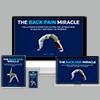Why We Have Back Pain & Backache? How to Avoid it & How to Fix it?
back and hip Tags: &, Avoid, Back, Backache, PainNo Comments »

Low BackAche and Back Pain is one of most common problems, What are the most common causes of Back Ache and Back Pain? Tips on how to avoid back pain and also how to treat it.
How to Support Us?
One time Contribution: https://fundrazr.com/FreeMededucation
Become Our Patron and Monthly Supporter: https://www.Patreon.com/FreeMedEducation
Follow us:
YouTube: https://www.youtube.com/c/FreeMedEducation
Facebook: https://www.facebook.com/FreeMedEducation
Facebook Groups: https://www.facebook.com/groups/1162636387091983
#FreeMedicalEducation #BackPain #Backache
Video Rating: / 5

Dr. Ebraheim’s educational animated video describes tests and techniques for discovering an exaggerating or malingering patient.
When automobile or work-related accidents occur, healthcare professional may be asked to examine a patient who might be exaggerating the extent of their injuries. The patient may be exaggerating their symptoms, complaints and the extent of their injuries. Detecting malingering patients or fakes can be hard. Some tests are proposed to detect exaggeraters with low back pain symptoms.
Waddell’s sign is a set of physical signs used to indicate if chronic low back pain is due to non-organic or psychological components. There are five categories of tests included in the Waddell’s sign:
•Simulation tests
•Tenderness tests
•Flip test
•Nonanatomic weakness and sensory findings
•Overreaction
These test alone are not enough but when combined with other parts of the exam, they are helpful. A patient having positive results to three out of five tests could suggest that the patient is either malingering or exaggerating symptoms. Some people do not think that the Waddell’s test is reliable. These signs are controversial but helpful, in fact they are no proven to be effective.
Simulation tests
The patient should stand with the feet together and rotate the pelvis or provide compression on the top of the head. These maneuvers should not cause pain as minimal load or motion occurs on the spine.
Tenderness tests
When touching the patient lightly “causes” extreme pain or deep tenderness. Pain is said to be felt over a wide surface area (superficial tenderness). Inconsistent or inappropriate pain responses.
Flip tests
When the patient is in a sitting position and extension of the leg does not produce a pain response. However, when the patient is in supine position, performing the straight leg raise maneuver causes the patient to express an extreme pain response. Response to both maneuvers should be the same.
Nonanatomic weakness and sensory findings
Some groups of muscles may be weaker than others. The patient may have the legs “give out” on them. The physician may not be able to explain on a neurological basis why this has occurred.
Sensory changes: Reduced sensation with light touch or a pinprick. All the motor and sensory changes cannot be explained on a neurological basis. Muscle weakness of a specific muscle group and sensory changes cannot follow the same dermatomal area.
Overreaction
Overreaction during examination may be seen in the form of extreme facial expression, sweating, or verbal responses.
There are some facts that will help the clinician to separate both groups. Repeat the exam twice, distract the patient before performing the exam the second time and compare the responses form each exam looking for consistency in the patient’s response.
In 95% of all disc herniation cases, the L4-L5 or L5-S1 disc levels are involved. Herniation of the L4-L5 disc will affect the L5 nerve root. Herniation of the L5-S1 disc will affect the S1 root.
Positive straight leg raise
Examination indicates a herniated disc. Findings of the examination tests must coincide with radiological imaging. Be aware that a herniated or bulged disc as seen on MRI can occur in asymptomatic patients. Look to see where the herniation is located, the level, the side, right or left, see if the clinical exam matches the MRI, see if MRI findings are old or recent.
Detecting malingering patients
See if the patient has symptoms before the accident and document the information.
The patient may need simple treatment such as PT, brace or NSAIDS.
The patient may need diagnostic trigger point or SI joint injections.
Be aware that the result of surgery is better if the patient has positive imaging, positive tension signal in neurological deficit.
Be aware of a patient who screams when you touch them, exaggerates, complains and has pain everywhere.
The mechanism for their injury is usually a simple fall or minor accident.
Waddell’s test is designed to identify a pattern of responses to specific physical examinations
Waddell’s test should not be used to deny adequate treatment for the patient.
Look for occult problems such as piriformis syndrome, fibromyalgia or SI joint problems.
Some patients may not get better if there are no secondary gains.
Waddell’s sign can result from fear of the doctor, the facility or from decreased function.
Patient will probably not be aware that the same test can be done differently
The physician should repeat the exam.
Symptomatic exaggeration and negative findings is a big problem.
Simulation for financial gain may be learned response to pain and the patient may not be aware of its development.
Conscious deception by a patient who is undergoing an exam is extremely rare.
Become a friend on facebook:
http://www.facebook.com/drebraheim
Follow me on twitter:
https://twitter.com/#!/DrEbraheim_UTMC
Video Rating: / 5





























































